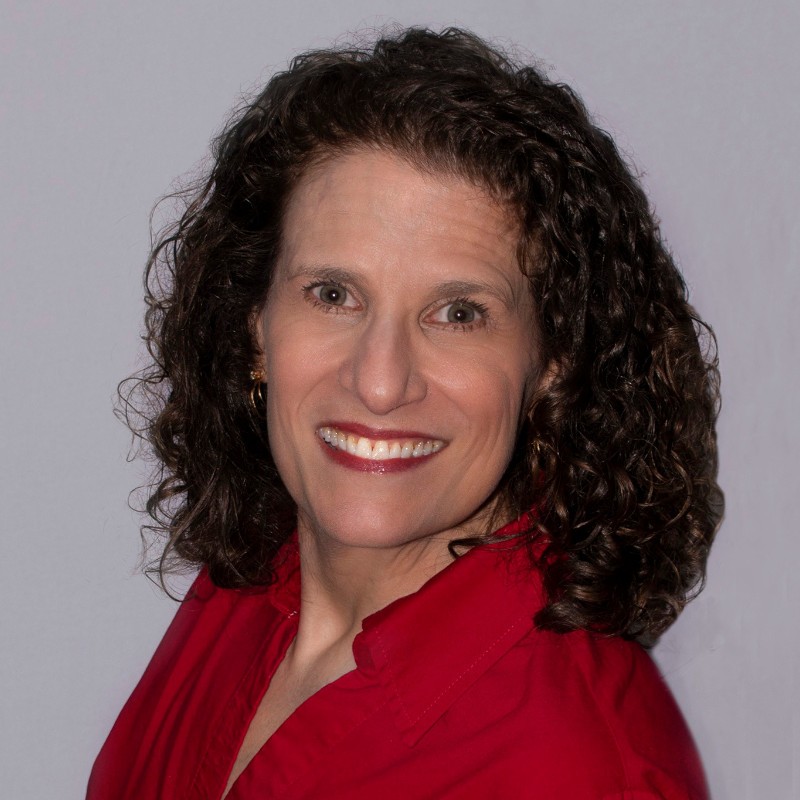Interview with Meryl K. Evans, CPACC

Every week, we meet with audience members with disabilities who are willing to come forward and share a little bit about their own personal journey and experiences, attending live, in-person, or virtual speaking or training events. Through their unique and generous perspectives, speakers, trainers, facilitators, and other communication professionals can hopefully learn about some of the things that they do well, but also (and maybe more importantly) about some of the things they could improve to provide an experience that is truly inclusive of everyone.
Meet Meryl, an audience member who is deaf
So without further ado, let’s dive right into this week’s interview with Meryl K. Evans, CPACC (she/her). Meryl is deaf and comes to us from Texas, USA.
Introductions
QUESTION 01 Can you tell us a bit about yourself, and how your disability might impact your experience, as someone who attends live in-person and virtual events?
I was born profoundly deaf. After talking to experts, my parents raised me orally. This meant lots of speech therapy to learn how to speak and read lips. Despite years of speech therapy, I have a deaf accent and miss a lot.
Lipreaders, on average, only catch one-third of what’s said. The one-third statistic doesn’t mean I only catch one-third of all conversations. Some people I may understand most of the time while others are half the time. Then I can barely understand people who talk fast, have a heavy accent, or mumble. This is frustrating because listening is important.
A few months after the pandemic hit, several major video platforms added automatic captions. That’s when everything changed. They help me fill in a lot of blanks. And if someone is hard to lipread, I have captions to fall back on. I can’t do that with in-person events.
Things that ruin the experience
QUESTION 02 Thinking back on some of your experiences attending in-person or virtual events, what are some of the worst things speakers, trainers, and other communication experts can do to ruin your experience as an attendee?
I choose my seat carefully where I think I’ll have the best view of the presenter and slides. One of the worse things speakers can do is walk past me while talking. Or if they don’t walk past me, they walk back and forth, sideways, or turn their heads sideways to look to the side audience. Then, I miss more of what they say. Speakers who mumble or talk fast lose me. I’ll do what I can to leave the room quietly and politely. Sometimes I’m stuck and will stay in the room and pass the time with my phone or something. This is why I rarely attend conferences and services. My time is better spent elsewhere.
Things that make a positive impact
QUESTION 02 Can you share some of the great things speakers, trainers, and other communication experts sometimes do that make a positive impact on your ability to fully enjoy your in-person or virtual event experiences?
It’s very hard to caption live events even with humans. Humans may get all the words right, but there’s a slight delay. So, it won’t match what the speaker says like in a recorded program. So, I tend to prefer a recording. I’ve been attending an all-day in-person class once a month. We have lots of speakers on this day. I find I don’t get as much from panel discussions as I do when there’s one speaker. I can’t always understand all the panelists and sometimes I end up with a gap in the conversation that I can’t figure out. I like slides because they provide context. Not slides that contain a ton of text that you’re reading it. (Please don’t.) It’s more effective to use images and a few keywords.
Sharing a piece of advice
QUESTION 04 If you had one piece of advice to give speakers, trainers, and other communication experts, so their content became more inclusive of people who have disabilities, what would it be?
Mix it up as everyone has different learning styles by using sounds, videos (captioned), images (described), and interactivity that allows for multiple ways to communicate. Many deaf people including me get tired easily. It’s important to take a lot of breaks. We’d rather take more breaks that are shorter than a few long breaks. And be cautious about how much content you present. That’s why it’s important to try to mix up the activities. Deafness is a spectrum. What works for one deaf or hard of hearing (HoH) person won’t necessarily work for another. Ask them how you can better serve them.
Wrapping up
QUESTION 05 Thank you for sharing some of your insights with us today. As we wrap up our conversation, is there anything that you’d like to add, such as another thought, another piece of advice, another perspective, etc.?
Focus on enunciation with lips and avoid talking fast. Recycle your presentation by turning it into an article. It’s hard to watch a long video of a presentation. An article would be a great alternative. If you have notes to share, share them. Help identify volunteers to take notes as some people do it anyway and they’re good notes. Ask if you can share them with the class. (Don’t single out anyone.)
Another thing to consider is communication. Always offer at least two ways to communicate. One of the dizzying aspects of attending a class is when the audience or students ask questions. I usually tune out because it’s not worth turning around to hunt down the speaker. A better way is to have the speaker repeat the question for everyone. I’ve been in classes where people come to the front of the room to ask questions.
Connect with our guest on social
Interested in knowing more about our guest this week? You can follow Meryl on LinkedIn and Twitter.

About Denis Boudreau
Denis Boudreau is a consultant, trainer, coach, and speaker specializing in inclusive leadership and inclusive communication. He works with leaders and executives who are no longer willing to overlook disability inclusion and want to transform their leadership approach from “inclusive-ish” to truly inclusive by championing accessibility. A Certified Professional in Web Accessibility (CPWA), Denis has trained thousands of professionals over the past two decades and has delivered hundreds of workshops worldwide in both English and French. He has helped leading brands like Netflix, Salesforce, Victoria’s Secret, and many more embed disability inclusion into their business strategies, empowering them to break down barriers and create deeper, more meaningful connections with their target audiences while also meeting legal obligations.
